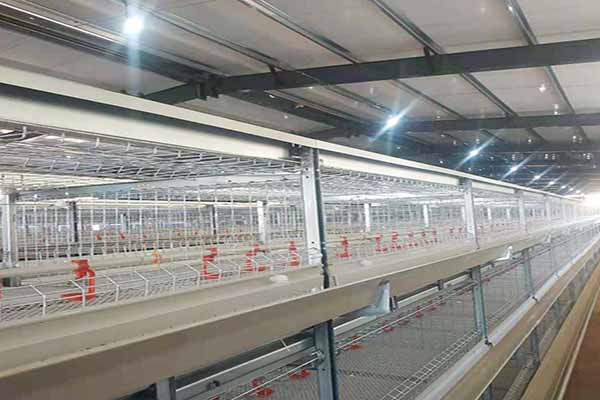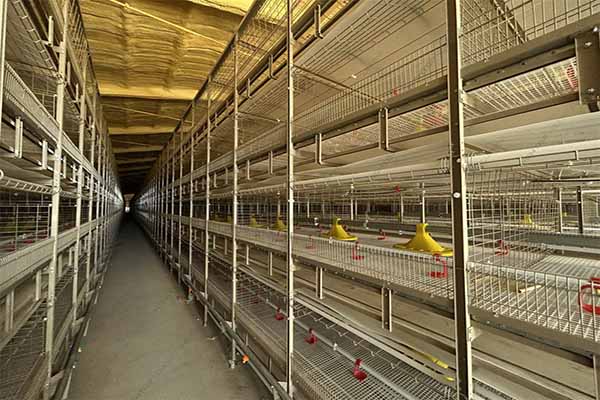Impact of Export Tariffs on Chicken Farm Equipment in Kenya
Time : 2025-07-01
In recent years, the poultry industry in Kenya has witnessed significant growth, with the demand for efficient chicken farm equipment skyrocketing. This surge in demand is partly attributed to the country’s ambitious plan to increase poultry production to meet the growing consumer demand for meat. However, the implementation of export tariffs on chicken farm equipment has raised several concerns within the industry. This article delves into the implications of these tariffs on Kenya’s poultry farming sector, providing insights into the challenges and opportunities they present.

The Poultry Industry in Kenya: A Brief Overview
Kenya’s poultry industry has seen a substantial increase in production, with annual poultry meat production estimated to be around 150,000 metric tons. The sector has contributed significantly to the country’s GDP, and the government has been keen to support its growth. The demand for chicken meat has been rising, with urban consumers particularly interested in consuming chicken as a protein source.
Role of Chicken Farm Equipment in Poultry Production
Modern chicken farm equipment plays a crucial role in enhancing productivity and efficiency in poultry farming. This includes incubators, feeders, drinkers, lighting systems, ventilation systems, and biosecurity equipment. These tools are essential for ensuring the health and well-being of the birds, reducing disease outbreaks, and improving the overall output of the farm.
Importance of Quality Equipment
High-quality chicken farm equipment is necessary for optimal farm performance. It ensures that birds are well-fed, have access to clean water, and are provided with an environment conducive to growth. However, the quality of equipment can vary, and the availability of reliable suppliers is crucial for farmers.
Impact of Export Tariffs on Chicken Farm Equipment
Export tariffs on chicken farm equipment can have a profound impact on Kenya’s poultry industry. These tariffs are essentially taxes imposed on imported goods, which in this case are chicken farm equipment. Here are some of the key impacts:
essentially taxes imposed on imported goods, which in this case are chicken farm equipment. Here are some of the key impacts:
Increased Costs for Farmers
With export tariffs in place, the cost of importing chicken farm equipment increases. This means that farmers in Kenya have to pay more for the same quality of equipment, which can significantly affect their budgets. Higher costs can lead to reduced investments in farm equipment, ultimately affecting the overall efficiency of poultry production.
Reduced Availability of Equipment
Higher costs can also lead to a reduction in the availability of chicken farm equipment. Importers may be less willing to bring in large quantities of equipment due to the increased costs, leading to shortages. This scarcity can result in farmers having to wait longer for essential equipment, impacting their operations and potentially causing them to lose revenue.
Decreased Productivity
The lack of access to quality equipment can lead to decreased productivity on chicken farms. Poorly equipped farms may experience higher mortality rates, lower growth rates, and increased disease outbreaks, all of which can affect the bottom line. The inability to invest in the right equipment can stifle the growth of the poultry industry in Kenya.
Impact on Smallholder Farmers
Smallholder farmers, who are already operating on thin margins, may be disproportionately affected by export tariffs. They often lack the capital to absorb the increased costs, which can lead to a decline in their productivity and a loss of livelihoods.

Strategies to Mitigate the Impact
Despite the challenges posed by export tariffs on chicken farm equipment, there are several strategies that can be employed to mitigate their impact:
Domestic Manufacturing
The Kenyan government and private sector can work together to develop a domestic manufacturing industry for chicken farm equipment. This would reduce reliance on imports and potentially lower the cost of equipment for local farmers.
Subsidies and Incentives
Government subsidies and incentives can help offset the increased costs of chicken farm equipment for farmers. This would encourage investment in quality equipment and improve overall farm productivity.
Enhanced Research and Development
Investing in research and development can lead to the development of more affordable and efficient chicken farm equipment. This could help make advanced equipment more accessible to smallholder farmers.
Conclusion
The implementation of export tariffs on chicken farm equipment in Kenya has significant implications for the poultry industry. While these tariffs can increase costs and reduce access to essential equipment, they also present opportunities for growth and development. By focusing on domestic manufacturing, subsidies, and research and development, the Kenyan government and private sector can work together to ensure that the poultry industry continues to thrive despite these challenges.











